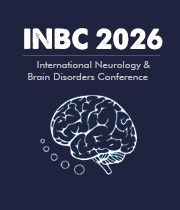Self-monitoring
Self-monitoring is becoming increasingly prevalent in neurological studies, as it provides an important tool for understanding the changes occurring in the brain in response to different stimuli. Self-monitoring enables individuals to observe and record their responses to a variety of cognitive, motor, behavioral and emotional tasks, and may provide invaluable insights into how the brain processes information. Self-monitoring is particularly useful in neurology studies because it allows researchers to observe the changes in a person’s behavior in real time. This is particularly useful when investigating the effects of drug treatment or cognitive stimulation. Self-monitoring can reveal areas of the brain that are more or less active in response to these treatments, leading to a better understanding of how they work. In addition, self-monitoring can provide a better picture of the individual's overall functioning, which is important when assessing the effectiveness of treatments. For example, in the study of drug treatments, the individual needs to be monitored to understand how their performance in different tasks changes over the course of treatment. Self-monitoring can also provide insight into how a person is adapting to certain treatments, such as whether they are engaging in more or less activity, what kinds of strategies they are using to complete tasks, or how their emotions are affected. Self-monitoring can also be used to assess the effectiveness of cognitive stimulation. This might involve tracking changes in the speed and accuracy of thinking processes, memory, reaction time, and other cognitive abilities. Self-monitoring can help to identify areas of the brain that are being affected by the stimulation, helping to determine which areas of the brain are responding best to the treatment. Finally, self-monitoring provides an invaluable tool for assessing the effects of a person’s environment on their functioning. By tracking their behavior over time, researchers can observe how a person is adapting to different environmental factors, such as lighting, noise levels, or temperature. This can provide valuable information for designing and evaluating different therapeutic interventions. Overall, self-monitoring is an important tool for understanding changes

Joe Sam Robinson
Mercer University, United States
Robert B Slocum
University of Kentucky HealthCare, United States
George Diaz
Memorial Healthcare Systems, United States
Daniel Curry
Texas Children’s Hospital, United States
Zhenhuan Liu
Guangzhou University Chinese Medicine, China
Kiran Ghotra
Lake Erie College of Osteopathic Medicine, United States




Title : Atypical presentation of Juvenile myoclonic epilepsy in a 16-year-old female: A Case Report
George Diaz, Memorial Healthcare Systems, United States
Title : What we don’t know about hydrocephalus and It’s management
Daniel Curry, Texas Children’s Hospital, United States
Title : Artificial intelligence-driven DWI and FLAIR for the detection of early stroke changes: A systematic review
Shari L Guerra, The Medical City, Philippines
Title : Mapping neuroplasticity in occupational therapy: Evidence-based interventions with measurable neural outcomes
Jessica Marchant, Texas Woman's University, United States
Title : Non-pharmacologic management of orthostatic hypotension in inpatient rehabilitation: A quality improvement initiative
Laura Steakin, Rehabilitation Institute at Sinai, United States
Title : Non-pharmacologic management of orthostatic hypotension in inpatient rehabilitation: A quality improvement initiative
Mackenzie Weber, Rehabilitation Institute at Sinai, United States